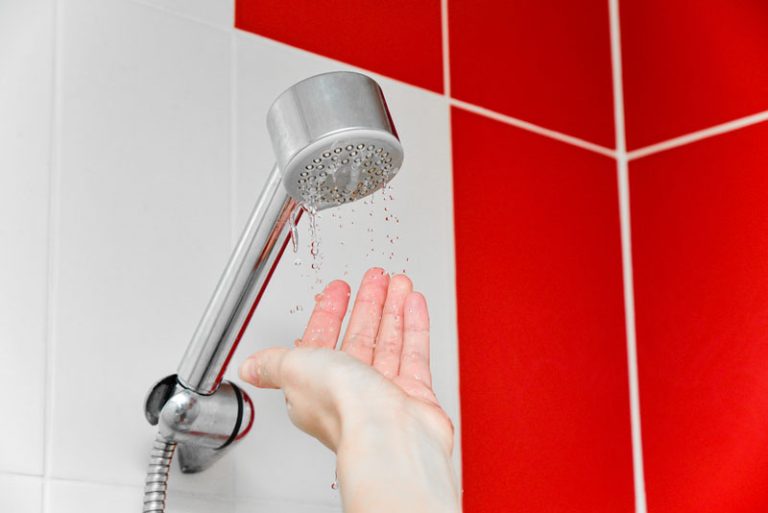Low water pressure is not just a minor inconvenience; it can disrupt our daily routines and signify significant issues in our homes’ plumbing systems. If you’ve ever had to deal with weak water flow that makes simple tasks like showering or washing dishes frustrating, you’re not alone.
Thankfully, there are ways to address low water pressure and restore your home’s flow to its full potential, whether you decide to tackle it yourself or call in a professional.
Let’s dive into the process of identifying and fixing low-water pressure problems in your house.
Understanding the Causes of Low Water Pressure
Before we roll up our sleeves and get to work, it’s essential to understand why low water pressure occurs. Several factors contribute to this issue, which could be isolated to specific fixtures or widespread across your entire household.
Common Causes Include:
- Debris Buildup: Sediment, dirt, and other particles can accumulate in your pipes over time, constricting water flow.
- Mineral Deposits: Hard water is a common culprit, leading to the accumulation of mineral deposits that reduce pipe diameter.
- Partially Closed Valves: Valves leading to individual appliances or areas of the house may be partially closed, limiting water intake.
- Leaks: Even small leaks can divert a significant portion of your water supply, impacting the pressure elsewhere in the system.
Step 1: Check for Localized Problems
The first step is to check if the low water pressure issue is localized to a specific faucet, showerhead, or valve. Begin by assessing the water flow in various areas of your home. If only one fixture is affected, there’s a good chance the problem is with that specific item rather than the entire system.
Assessing Faucets and Showerheads:
- Remove the nozzle or showerhead and clean out any debris that may be clogging the water outlets.
- Inspect the aerator or screen for buildup and ensure it hasn’t been damaged.
Examining Valves:
- Identify any valves you can find leading to the affected area and ensure they are fully open.
- If valves appear to be in the correct position, try closing and then reopening them to dislodge any blockages.
Step 2: Inspect the Main Water Valve
If the entire household is experiencing low water pressure, the next step is to inspect the main water shut-off valve. This valve can be partially closed due to accidental nudges or for maintenance and then forgotten, leading to decreased water flow throughout the house.
Locating the Main Water Valve:
- In most homes, you can find the main shut-off valve where the water line enters the house.
Assessing the Valve:
- Turn the valve counterclockwise to ensure it’s in the fully open position.
- If the valve has a wheel handle, it is often parallel to the pipe when open. If it’s a lever, it’s typically perpendicular to the pipe when off and parallel when on.
Step 3: Clearing Clogs in Pipes
If neither localized issues nor the main shut-off valve are causing the problem, it’s time to clear out any clogs that may be affecting the water flow through your pipes.
DIY Solutions for Clearing Clogs:
- Begin by shutting off the water supply to the affected area.
- Use a plumber’s snake or auger for standalone fixture lines and water pressure from another source to push the clog out through the main line.
- Alternatively, eco-friendly options like baking soda and vinegar can help break down buildup without harsh chemicals.
- Consult the help manual of your plumbing system for specialized directions.
Step 4: Addressing Pipe Leaks
Even the smallest leaks can have a significant impact on your water pressure. Check for any signs of leaks around your house, such as damp spots, mold growth, or unexplained increases in your water bill.
Identifying Leaks:
- Check under sinks, around appliances, and in basements or crawl spaces for visible leaks.
- Leaks don’t always present themselves in obvious ways, so you may need to let the water run to detect more subtle issues.
Fixing Leaks:
- For minor leaks, like those in pipes or fittings, you may be able to tighten connections or use a sealant.
- Larger leaks or those within walls should be addressed by a professional plumber to prevent further damage and ensure a thorough fix.
Step 5: Consulting a Professional
If you’ve gone through the previous steps and haven’t resolved the issue—or if you’re uncomfortable performing any of the suggested tasks—contacting a professional plumber is the best course of action. They have the expertise and tools to diagnose and fix more complex plumbing problems.
When to Call a Plumber:
- If the problem persists after clearing clogs or addressing valve issues, it may indicate a larger issue with the plumbing system.
- Professionals can also provide long-term solutions to combat issues like hard water or recurring clogs.
What to Expect from a Plumbing Service:
- A plumber will typically perform a comprehensive inspection to determine the cause of the low water pressure.
- They will then advise on the best course of action to restore your home’s water flow, providing an estimate for the work involved.
By following these steps, you can address low water pressure in your house and enjoy a fully functioning plumbing system once more. Remember, patience and caution are always key when working with any plumbing issues, and safety should be the utmost priority. If in doubt, don’t hesitate to reach out to a professional for assistance.
Maintaining a healthy plumbing system ensures a comfortable living environment and can even prevent more significant and costly issues in the future. It’s an investment in your home’s infrastructure and your peace of mind.


